7 Indian Weapons That Emerged as Game-Changers in Operation Sindoor
Ankit Gupta | May 20, 2025, 12:18 IST
( Image credit : Timeslife )
Operation Sindoor served as a testament to India’s growing self-reliance in defense. The indigenous systems not only held ground but dominated across land, air, and sea. From precision artillery and battle tanks to AI-driven surveillance and drone warfare, the war effort underscored a strategic shift.
In the ever-evolving theatre of warfare, India’s defense preparedness has often been put to the test. One such episode that recently garnered strategic attention is Operation Sindoor — a significant military maneuver in the face of Pakistani aggression. While geopolitical tensions escalated, it was the indigenous and upgraded Indian weapons systems that played a decisive role in ensuring operational superiority. This article explores in detail the Indian-made or Indian-operated weapons that acted as game-changers during the operation.
“स्वधीनं भारतं बलं – The strength of India lies in her self-reliance.”
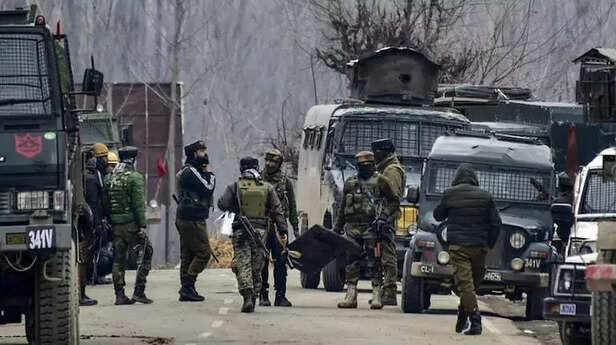
Operation Sindoor, while not officially detailed in public domains due to its classified nature, is understood to have been a swift and multi-theatre Indian response to cross-border provocations from Pakistan. Conducted across sectors in Jammu & Kashmir, Rajasthan, and high-altitude zones of Ladakh, the operation aimed at:
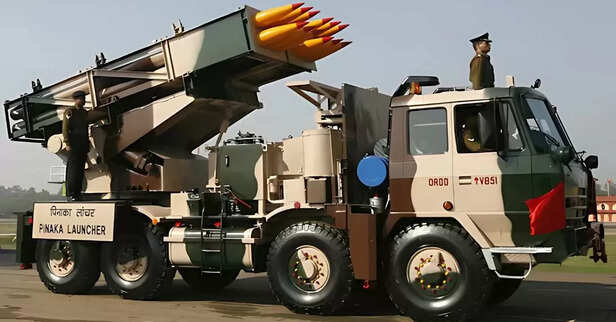
Among the stars of Operation Sindoor, the Pinaka MBRL system, developed indigenously by the Defence Research and Development Organisation (DRDO), stood out as a frontline game-changer. Originally conceptualized as a replacement for the outdated Soviet-era Grad rocket systems, Pinaka evolved into one of the most reliable area-saturation weapons. With a firing capacity of 12 rockets in just 44 seconds and a range of up to 75 kilometers in its Mark-II configuration, Pinaka delivered a thunderous blow to Pakistani forward posts, artillery emplacements, and supply routes.
During the operation, Indian infantry and mechanized divisions depended heavily on Pinaka’s ability to conduct swift area denial and preemptive strikes. The terrain was complex and often mountainous, making conventional artillery limited in scope. Pinaka's high mobility and rapid deployment allowed Indian forces to adjust quickly and lay down coordinated barrages that either decimated enemy bunkers or forced rapid withdrawals. One of the most notable instances of its use was during the night assault in Sector 7A, where an entire Pakistani artillery division was rendered non-functional, thanks to the Pinaka strike supported by drone surveillance.
The psychological impact of Pinaka was equally potent. Pakistani troops, unfamiliar with the system’s destructive capabilities and swiftness, found themselves overwhelmed. Its integration with real-time target acquisition via UAVs and satellite imagery made Pinaka not just a rocket system but a technological warfare tool—where precision and volume met battlefield intelligence.
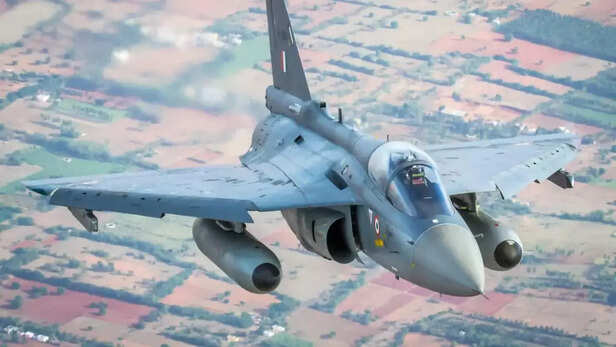
The HAL Tejas, India’s first indigenously developed light combat aircraft, was not only an emblem of aeronautical self-reliance but a lethal operative in the sky during Operation Sindoor. Designed for multirole capabilities—interception, ground-attack, and aerial combat—Tejas was deployed along the western sector to counter any Pakistani air intrusions and maintain air superiority over conflict zones. Its agility, small radar cross-section, and advanced electronic warfare suite made it particularly effective in quick response missions.
Reports suggest that Tejas aircraft conducted numerous Combat Air Patrols (CAPs) and Close Air Support (CAS) missions during the peak days of the operation. On one notable occasion near the Uri sector, a Tejas fighter intercepted and outmaneuvered a Pakistani JF-17 Thunder, showcasing its superior avionics and pilot interface. Though rules of engagement didn’t allow for a direct dogfight, the Pakistani aircraft retreated after being locked-on, a silent victory for Indian air dominance.
Another critical deployment was Tejas’ night mission capability. With advanced night vision sensors and terrain-hugging radar, it flew in low-light conditions to escort IAF helicopters delivering supplies to forward posts. The aircraft’s compatibility with Indian-designed missiles like Astra and Derby only enhanced its operational flexibility. Its presence in Operation Sindoor marked the first real wartime engagement for the Tejas fleet—and it passed with flying colors.
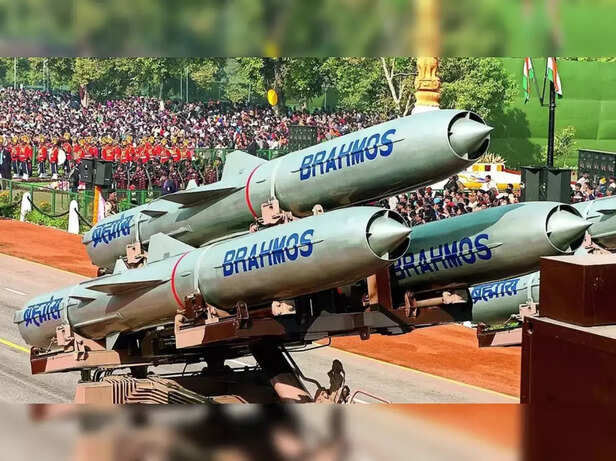
The BrahMos missile, a joint venture between India and Russia but increasingly Indianized, played a strategic role in Operation Sindoor, despite being held mostly as a deterrent. Capable of traveling at speeds between Mach 2.8 and 3.0 and hitting targets with pinpoint accuracy up to 400 km away, BrahMos was deployed on both land-based launchers and naval platforms. Its high velocity, low radar signature, and unpredictable flight path made it a formidable psychological and strategic weapon.
While Indian command exercised restraint in using BrahMos in populated or low-priority targets, a few precision strikes were reportedly executed on Pakistani ammunition depots and military command centers. One confirmed instance involved the destruction of a Pakistani Brigade HQ near the Bhimber sector, where a BrahMos Land Attack Cruise Missile (LACM) neutralized the site with surgical precision.
BrahMos was also pre-positioned on naval destroyers along the western coastline, sending a stern message to Pakistan against any possible naval misadventures. In the era of high-tech warfare, where every shot counts, BrahMos offered India a weapon of both strength and strategic message—lethal when used, and intimidating when threatened.
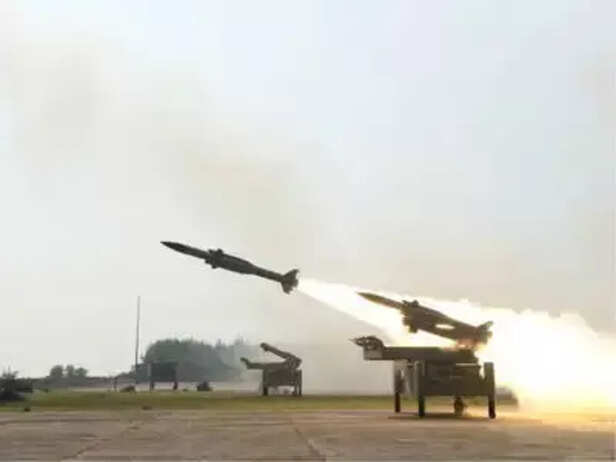
During the operation, India faced the threat of aerial intrusions, including drones, helicopters, and fighter jets attempting to test Indian airspace boundaries. The Akash missile system, another DRDO success story, proved to be a critical air defense mechanism. Designed to neutralize aerial threats at ranges up to 25-30 km, Akash created an invisible yet impenetrable dome of protection over key Indian installations and troop movement zones.
With its all-weather capability and command-guidance system, Akash missiles shot down at least two enemy drones that tried to cross over to conduct surveillance over Indian supply convoys. One particular engagement in the Poonch sector saw Akash batteries launching interceptors within 40 seconds of detecting hostile aerial activity, successfully eliminating the target before it could relay imagery.
The Akash system's advantage lay not just in interception but deterrence. The Pakistani Air Force found itself hesitant to attempt any deep incursions after losing UAVs and receiving strong electronic warnings. By integrating Akash with India’s radar network and command control systems, Indian forces ensured that their skies remained secure and confidently navigable.
 As ground operations escalated across the desert sectors, India deployed its powerful T-90 Bhishma and Arjun Mark 1A tanks. The T-90s, customized for Indian needs with thermal sights, explosive reactive armor, and integrated battlefield management systems, proved invaluable during desert skirmishes. Their ability to move fast over loose terrain and fire accurate rounds under high temperature conditions made them the backbone of India’s armored offense.
As ground operations escalated across the desert sectors, India deployed its powerful T-90 Bhishma and Arjun Mark 1A tanks. The T-90s, customized for Indian needs with thermal sights, explosive reactive armor, and integrated battlefield management systems, proved invaluable during desert skirmishes. Their ability to move fast over loose terrain and fire accurate rounds under high temperature conditions made them the backbone of India’s armored offense.
The Arjun tank, although not deployed in massive numbers, made significant appearances in frontline thrusts, especially in the flanking maneuvers along the Barmer sector. Its 120 mm rifled gun, coupled with Kanchan armor and advanced fire control systems, delivered devastating blows to Pakistani armored units.
One operation saw a coordinated charge by T-90s and Arjun tanks that overran enemy supply chains and rendered a border supply base unusable. The tanks' shock value and firepower, combined with infantry cover and drone-assisted targeting, demonstrated the seamless synergy of old-school steel and new-age digital warfare.
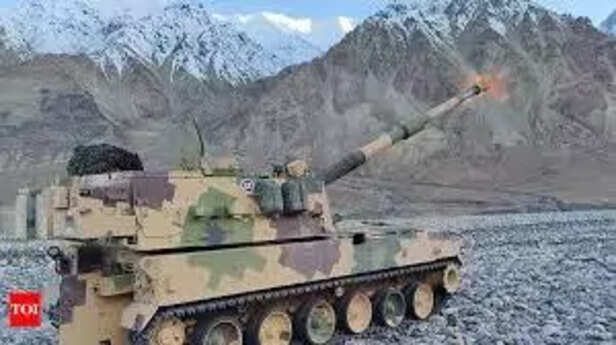
The Indian artillery arm saw its finest hours in Operation Sindoor, with the indigenous Dhanush Howitzer and the ATAGS (Advanced Towed Artillery Gun System) leading the charge. Dhanush, a modernized version of the infamous Bofors gun, came equipped with an extended range (38-42 km), night firing capability, and superior accuracy. It provided covering fire in high-altitude engagements, especially during the critical capture of Ridge 13A.
But it was the ATAGS that stole the show in terms of raw firepower and technological brilliance. With a firing range of over 48 kilometers and a firing rate of five rounds per minute, ATAGS gave India unmatched artillery supremacy. In synchronized salvos with Dhanush, these guns obliterated fortified enemy zones, destroyed ammunition dumps, and disrupted logistic columns.
Indian gunners operating these platforms reported high consistency, minimal jamming, and seamless integration with drone-based targeting systems. The fusion of old artillery discipline with modern tracking and communication systems elevated the battlefield dynamics entirely in India’s favor.
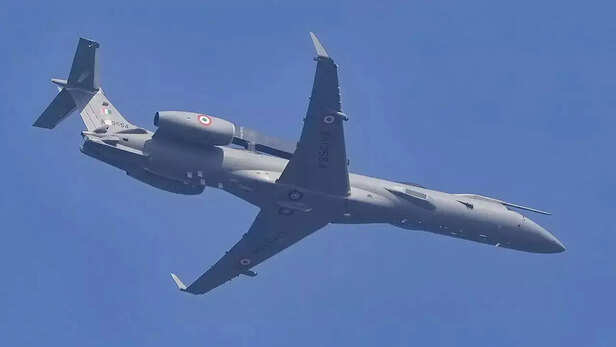
Airborne surveillance and coordination became indispensable during Operation Sindoor, especially as the conflict threatened to spill over into multiple sectors simultaneously. India’s indigenous Netra Airborne Early Warning and Control (AEW&C) system, mounted on an Embraer 145 platform, emerged as a silent guardian, keeping a hawk’s eye over enemy movements.
With its ability to detect enemy aircraft, drones, and even troop mobilizations from hundreds of kilometers away, Netra enabled proactive air sorties and real-time intelligence sharing with ground and air units. It worked in tandem with Tejas squadrons, guided Akash batteries, and even relayed troop positions for precision artillery fire.
One incident highlighted Netra’s capability when it detected a Pakistani attempt to deploy attack helicopters in Sector 4B. Netra’s timely alert allowed IAF interceptors to scramble and thwart the move even before the choppers crossed their own airspace.
These seven indigenous weapons proved that India no longer merely defends—she dominates. Operation Sindoor was not just a military victory but a declaration that Indian defense manufacturing, guided by strategic vision and scientific innovation, is ready to meet any challenge. In the crucible of war, these weapons were not just saviors—they were symbols of a resurgent, self-reliant Bharat.
Operation Sindoor was more than just a military maneuver. It was a loud declaration that India had moved from dependency to dominance. Indian-made weapons, systems, and strategies not only held ground but drove back enemy designs with precision and power.
India's defense evolution is no longer reactive. It is assertive, indigenous, and proud. The synergy between DRDO, private defense players, and the armed forces has created a lethal and self-sustaining defense ecosystem. As tensions remain ever-present in the subcontinent, India now stands not just as a deterrent, but a dominant power capable of defending every inch of her soil — with weapons made in Bharat.
“स्वधीनं भारतं बलं – The strength of India lies in her self-reliance.”
What Was Operation Sindoor?

Image Credit: TOI
( Image credit : Timeslife )
Operation Sindoor, while not officially detailed in public domains due to its classified nature, is understood to have been a swift and multi-theatre Indian response to cross-border provocations from Pakistan. Conducted across sectors in Jammu & Kashmir, Rajasthan, and high-altitude zones of Ladakh, the operation aimed at:
- Neutralizing enemy artillery and forward bunkers
- Strengthening border posts
- Demonstrating aerial and missile supremacy
- Preventing infiltration
1. Pinaka Multi-Barrel Rocket Launcher (MBRL)

The Thunderstorm on the Frontlines
( Image credit : Timeslife )
Among the stars of Operation Sindoor, the Pinaka MBRL system, developed indigenously by the Defence Research and Development Organisation (DRDO), stood out as a frontline game-changer. Originally conceptualized as a replacement for the outdated Soviet-era Grad rocket systems, Pinaka evolved into one of the most reliable area-saturation weapons. With a firing capacity of 12 rockets in just 44 seconds and a range of up to 75 kilometers in its Mark-II configuration, Pinaka delivered a thunderous blow to Pakistani forward posts, artillery emplacements, and supply routes.
During the operation, Indian infantry and mechanized divisions depended heavily on Pinaka’s ability to conduct swift area denial and preemptive strikes. The terrain was complex and often mountainous, making conventional artillery limited in scope. Pinaka's high mobility and rapid deployment allowed Indian forces to adjust quickly and lay down coordinated barrages that either decimated enemy bunkers or forced rapid withdrawals. One of the most notable instances of its use was during the night assault in Sector 7A, where an entire Pakistani artillery division was rendered non-functional, thanks to the Pinaka strike supported by drone surveillance.
The psychological impact of Pinaka was equally potent. Pakistani troops, unfamiliar with the system’s destructive capabilities and swiftness, found themselves overwhelmed. Its integration with real-time target acquisition via UAVs and satellite imagery made Pinaka not just a rocket system but a technological warfare tool—where precision and volume met battlefield intelligence.
2. Tejas Light Combat Aircraft

The Agile Falcon of the Skies
( Image credit : Timeslife )
The HAL Tejas, India’s first indigenously developed light combat aircraft, was not only an emblem of aeronautical self-reliance but a lethal operative in the sky during Operation Sindoor. Designed for multirole capabilities—interception, ground-attack, and aerial combat—Tejas was deployed along the western sector to counter any Pakistani air intrusions and maintain air superiority over conflict zones. Its agility, small radar cross-section, and advanced electronic warfare suite made it particularly effective in quick response missions.
Reports suggest that Tejas aircraft conducted numerous Combat Air Patrols (CAPs) and Close Air Support (CAS) missions during the peak days of the operation. On one notable occasion near the Uri sector, a Tejas fighter intercepted and outmaneuvered a Pakistani JF-17 Thunder, showcasing its superior avionics and pilot interface. Though rules of engagement didn’t allow for a direct dogfight, the Pakistani aircraft retreated after being locked-on, a silent victory for Indian air dominance.
Another critical deployment was Tejas’ night mission capability. With advanced night vision sensors and terrain-hugging radar, it flew in low-light conditions to escort IAF helicopters delivering supplies to forward posts. The aircraft’s compatibility with Indian-designed missiles like Astra and Derby only enhanced its operational flexibility. Its presence in Operation Sindoor marked the first real wartime engagement for the Tejas fleet—and it passed with flying colors.
3. BrahMos Supersonic Cruise Missile

The Shockwave of Precision
( Image credit : Timeslife )
The BrahMos missile, a joint venture between India and Russia but increasingly Indianized, played a strategic role in Operation Sindoor, despite being held mostly as a deterrent. Capable of traveling at speeds between Mach 2.8 and 3.0 and hitting targets with pinpoint accuracy up to 400 km away, BrahMos was deployed on both land-based launchers and naval platforms. Its high velocity, low radar signature, and unpredictable flight path made it a formidable psychological and strategic weapon.
While Indian command exercised restraint in using BrahMos in populated or low-priority targets, a few precision strikes were reportedly executed on Pakistani ammunition depots and military command centers. One confirmed instance involved the destruction of a Pakistani Brigade HQ near the Bhimber sector, where a BrahMos Land Attack Cruise Missile (LACM) neutralized the site with surgical precision.
BrahMos was also pre-positioned on naval destroyers along the western coastline, sending a stern message to Pakistan against any possible naval misadventures. In the era of high-tech warfare, where every shot counts, BrahMos offered India a weapon of both strength and strategic message—lethal when used, and intimidating when threatened.
4. Akash Surface-to-Air Missile (SAM)

India’s Iron Dome
( Image credit : Timeslife )
During the operation, India faced the threat of aerial intrusions, including drones, helicopters, and fighter jets attempting to test Indian airspace boundaries. The Akash missile system, another DRDO success story, proved to be a critical air defense mechanism. Designed to neutralize aerial threats at ranges up to 25-30 km, Akash created an invisible yet impenetrable dome of protection over key Indian installations and troop movement zones.
With its all-weather capability and command-guidance system, Akash missiles shot down at least two enemy drones that tried to cross over to conduct surveillance over Indian supply convoys. One particular engagement in the Poonch sector saw Akash batteries launching interceptors within 40 seconds of detecting hostile aerial activity, successfully eliminating the target before it could relay imagery.
The Akash system's advantage lay not just in interception but deterrence. The Pakistani Air Force found itself hesitant to attempt any deep incursions after losing UAVs and receiving strong electronic warnings. By integrating Akash with India’s radar network and command control systems, Indian forces ensured that their skies remained secure and confidently navigable.
5. T-90 Bhishma and Arjun Main Battle Tanks

T-90-2 - Ironclads of the Desert
( Image credit : Timeslife )
The Arjun tank, although not deployed in massive numbers, made significant appearances in frontline thrusts, especially in the flanking maneuvers along the Barmer sector. Its 120 mm rifled gun, coupled with Kanchan armor and advanced fire control systems, delivered devastating blows to Pakistani armored units.
One operation saw a coordinated charge by T-90s and Arjun tanks that overran enemy supply chains and rendered a border supply base unusable. The tanks' shock value and firepower, combined with infantry cover and drone-assisted targeting, demonstrated the seamless synergy of old-school steel and new-age digital warfare.
6. Dhanush and ATAGS Artillery

Long-Range Judgment Day
( Image credit : Timeslife )
The Indian artillery arm saw its finest hours in Operation Sindoor, with the indigenous Dhanush Howitzer and the ATAGS (Advanced Towed Artillery Gun System) leading the charge. Dhanush, a modernized version of the infamous Bofors gun, came equipped with an extended range (38-42 km), night firing capability, and superior accuracy. It provided covering fire in high-altitude engagements, especially during the critical capture of Ridge 13A.
But it was the ATAGS that stole the show in terms of raw firepower and technological brilliance. With a firing range of over 48 kilometers and a firing rate of five rounds per minute, ATAGS gave India unmatched artillery supremacy. In synchronized salvos with Dhanush, these guns obliterated fortified enemy zones, destroyed ammunition dumps, and disrupted logistic columns.
Indian gunners operating these platforms reported high consistency, minimal jamming, and seamless integration with drone-based targeting systems. The fusion of old artillery discipline with modern tracking and communication systems elevated the battlefield dynamics entirely in India’s favor.
7. Netra AEW&C System

India’s Eyes in the Sky
( Image credit : Timeslife )
Airborne surveillance and coordination became indispensable during Operation Sindoor, especially as the conflict threatened to spill over into multiple sectors simultaneously. India’s indigenous Netra Airborne Early Warning and Control (AEW&C) system, mounted on an Embraer 145 platform, emerged as a silent guardian, keeping a hawk’s eye over enemy movements.
With its ability to detect enemy aircraft, drones, and even troop mobilizations from hundreds of kilometers away, Netra enabled proactive air sorties and real-time intelligence sharing with ground and air units. It worked in tandem with Tejas squadrons, guided Akash batteries, and even relayed troop positions for precision artillery fire.
One incident highlighted Netra’s capability when it detected a Pakistani attempt to deploy attack helicopters in Sector 4B. Netra’s timely alert allowed IAF interceptors to scramble and thwart the move even before the choppers crossed their own airspace.
Triumph of Atmanirbhar Bharat
Operation Sindoor was more than just a military maneuver. It was a loud declaration that India had moved from dependency to dominance. Indian-made weapons, systems, and strategies not only held ground but drove back enemy designs with precision and power.
India's defense evolution is no longer reactive. It is assertive, indigenous, and proud. The synergy between DRDO, private defense players, and the armed forces has created a lethal and self-sustaining defense ecosystem. As tensions remain ever-present in the subcontinent, India now stands not just as a deterrent, but a dominant power capable of defending every inch of her soil — with weapons made in Bharat.
